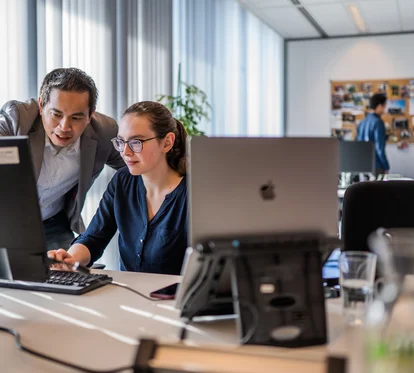In the past, support teams often preferred face-to-face interactions to solve problems. Users could simply go to the IT department office or call a help desk for immediate assistance. In this new era of flexible working, such face-to-face interactions are no longer a given. The rise of location-independent working has led to a redefinition of what personal support means. The focus is shifting from physical presence to effective virtual communication and support.
Personalised approach
Although in many cases the physical distance between users and support teams has increased, the importance of a personal approach remains crucial. Users need to feel heard and understood, even if their interactions are virtual. An increasingly important aspect, therefore, is the ability to convey empathy. Not only through words, but also through voice intonation. Showing understanding of the challenges users face and offering genuine solutions, creates a sense of trust and support. It is also important to know what a user is calling for, whether this user has had this problem before and whether this user has been stuck with a chatbot before, for example.
Tools and technologies for virtual support
Thanks to advanced technologies such as Artificial Intelligence (AI), virtual IT user support has become extremely effective. Tools, such as remote desktop access and instant messaging, enable support teams to help users as if they were standing next to them. Remote desktop software allows direct access to the user's computer, allowing for quick troubleshooting. With the click of a button, a system can be taken over, allowing immediate work on a solution. Video conferencing allows visual contact, which contributes to more personal interaction than text messages alone. Instant messaging platforms offer a quick and direct way to answer questions and solve problems.
Individual needs and customisation
One of the challenges of location-independent working is that users have diverse technological preferences and needs. Some users are tech-savvy and may want detailed explanations, while others may need more visual support. Such differences in working practices also arise due to different generations in the workplace. Understanding these individual needs and tailoring the support accordingly are essential aspects of providing personally focused IT support. This can range from providing detailed step-by-step instructions to offering guidance via video calls.
The human aspect
In a world of pixels and bits, maintaining the human aspect is invaluable. Even during virtual interactions, it is important to show empathy and understanding. Listening to users' concerns, showing patience and building a relationship of trust contribute to maintaining a positive support experience. This can be achieved by actively listening to users, asking questions to fully understand their needs and ensuring they feel heard and respected.
Future of IT user support
As we continue to rapidly adapt to an ever-changing digital environment, the future of IT user support is all about innovation. Emerging technologies, such as Artificial Intelligence (AI) and chatbots, promise to further improve the efficiency and personalisation of support. These tools can automate routine tasks, provide quick answers to frequent questions, and even perform predictive analytics to identify potential problems before they occur. Yet the human element, which cannot be replaced by technology, remains a crucial factor in delivering an exceptional support experience. Finding the right balance between technology and human contact is vital to ensure seamless, effective and personalised IT user support.

